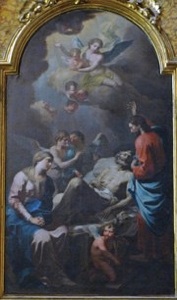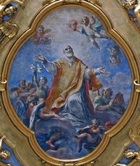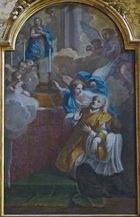


This church, which occupies the cella of the Roman temple in Piazza del Comune, has had a number of dedications:
-
✴By 1212, the space had been adapted as the church of San Donato.
-
✴It served as a public palace from 1212 until 1456, when it was re-opened as SS Donato, Sebastiano e Bernardino da Siena.
This earlier history is set out in the page on the temple.
By 1527, the church was in a state of decay, and the Commune resolved to restore it. In 1539 , apparently at the behest of Pope Paul III, it was transferred to a Marian confraternity and re-dedicated to the Virgin, and it later became known as Santa Maria sopra Minerva.
-
✴In 1613, Bishop Marcello Crescenzi transferred the church to the Franciscan Third Order, whose convent was at Sant’ Antonio da Padova.
-
✴In 1758, the Franciscans sold the church to the Oratorian Fathers, who built the adjoining convent. They demolished the building above the pronaus of the ex-temple, restoring the façade to something like its original appearance.
-
✴The Oratorian Fathers were expelled in 1810, and the complex then passed to the secular clergy.
In 1918, the church and convent passed back to the Franciscan Third Order. The latter (at number 2 Via San Paolo) became known as the Convento di Sant Antonio (since the community had been concentrated at Sant’ Antonio di Padova throughout the period 1758-1860).
Interior
The church was remodelled in 1634 by Giacomo Giorgetti, who
-
✴extended the church backwards, which required the demolition of the back wall of the temple ( so that, following a recent excavation, the pavement that was originally outside the temple can now be seen in the presbytery);
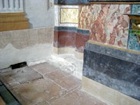
-
✴removed the room that had been built in the upper part of the cella and built a new barrel vault; and
-
✴designed the high altar, which is made mostly from gilded stucco.
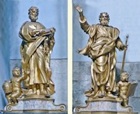
-
✴installed the present vaulted ceiling;
-
✴installed the organ on the counter-facade;
-
✴installed figures of SS Peter and Paul (illustrated here) to the sides of the high altar; and
-
✴commissioned Pietro Carattoli to design:
-
•the two side altars (1758); and
-
•the sacristy (1758-9).
They also commissioned the frescoes of the vaults and altarpieces for the high altar and the two side altars (see below). The panel that they had installed on the high altar (see below)was replaced by a statue of Madonna of Lourdes, a gift from France to the city of Assisi, in 1896.
Frescoes (1760)
-
✴St Philip Neri in glory and the four Cardinal Virtues (in the vault); and
-
✴the three Theological Virtues, in lunettes above the high altar.
Death of St Andrew Avellino (1764)
Death of St Joseph (1764)
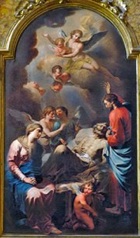
Art in the Sacristy
These panels include:
-
✴St Jerome (17th century), attributed to Giacomo Giorgetti;
-
✴figures of the Annunciation (17th century), attributed to Girolamo Martelli; and
-
✴the Crucifixion with saints (18th century), attributed to Francesco Appiani.
Art from the Church
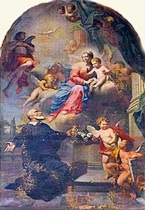
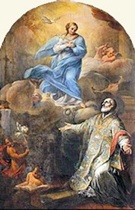
Two panels from the church that were painted less than 20 years apart, both of which depict the Virgin appearing to St Philip Neri, are now in the Museo Diocesano:
-
✴the panel (probably 1764) illustrated above on the left, which is securely attributed to Martin Knoller, was documented on an unspecified altar in the church in 1884; and
-
✴the other panel (1781), which is signed by Baldassarre Orsini and dated by inscription, was documented on the high altar in 1844 and removed in 1896 to make way for the statue of Madonna of Lourdes (see above).
The two panels are of very similar dimensions: it has been suggested that the Oratorian Fathers commissioned the panel by Knoller for the high altar, but subsequently moved it to another altar to make way for the panel by Orsini.
The reason for the change might have been iconographic:
-
✴the earlier one portrays a vision of the Madonna and Child in glory while the later one depicts her explicitly as the Immaculate Virgin; and
-
✴the later one also depicts St Philip Neri in the way that he had been depicted in a venerated image by Guido Reni in their mother church in Rome (which is is now replaced there by this copy in mosaic).
